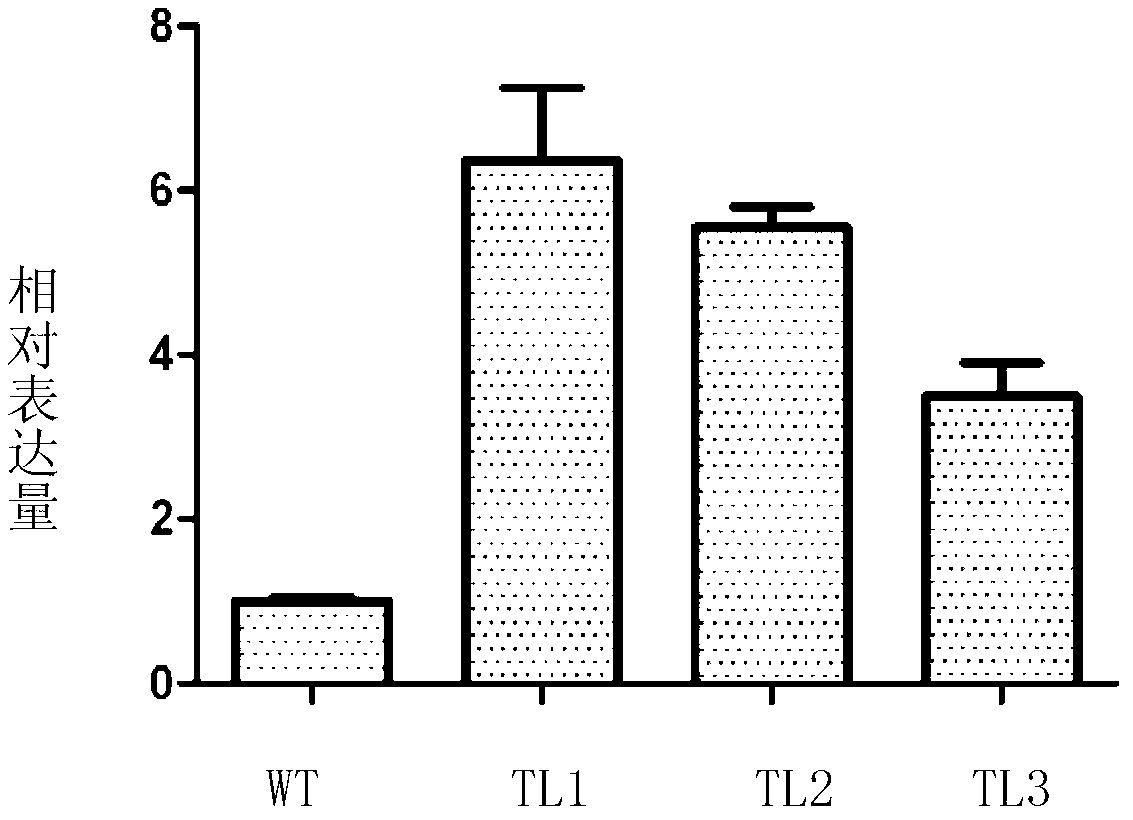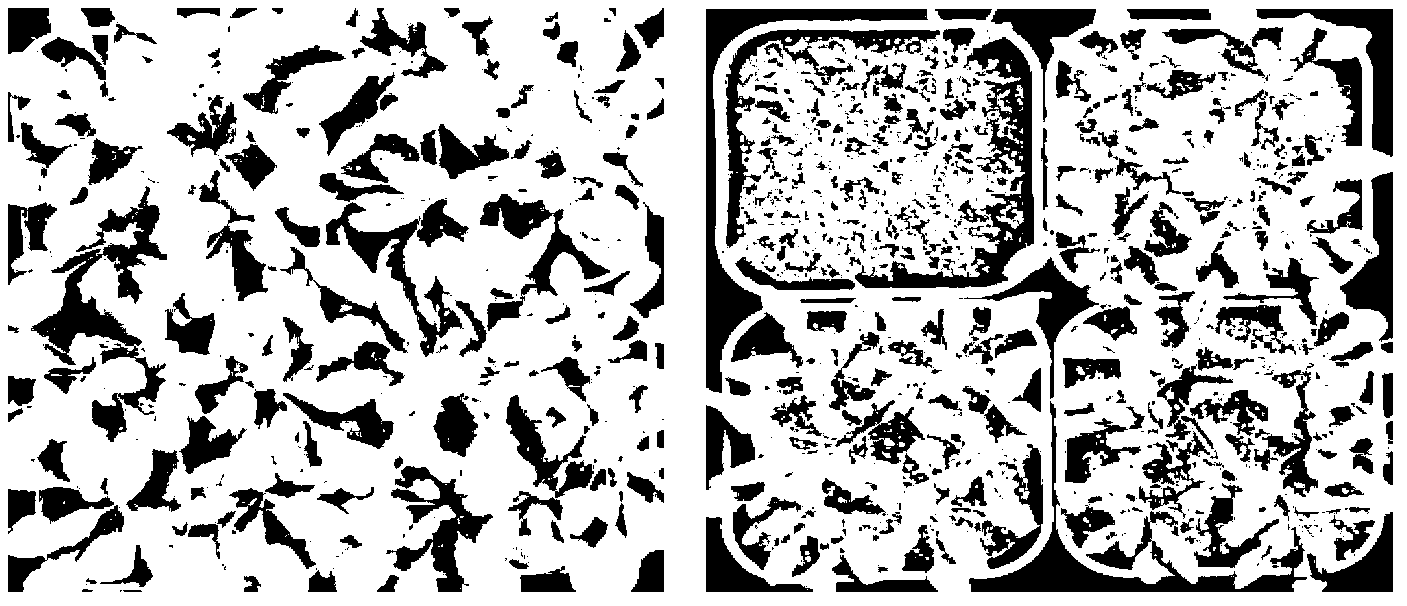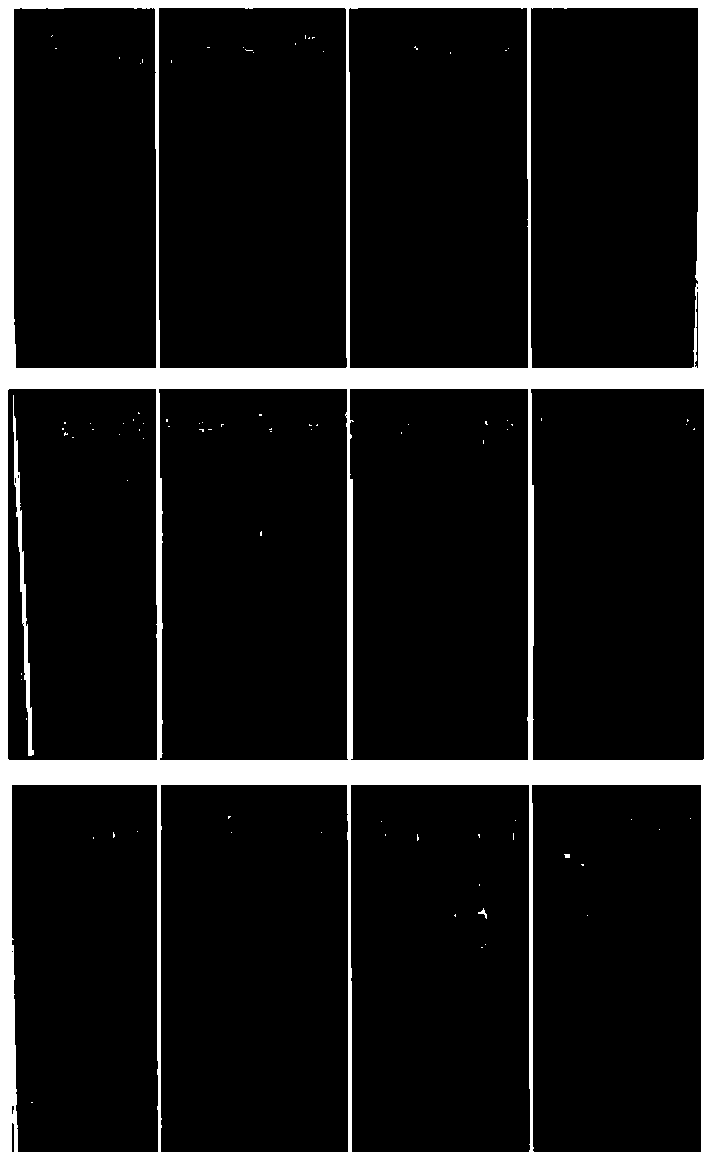Application of protein AtbHLH122 of arabidopsis thaliana and coding gene of protein AtbHLH122 for regulating and controlling stress tolerance of plants
A technology of plant stress tolerance and encoding genes, applied to the application field of Arabidopsis protein AtbHLH122 and its encoding genes in regulating plant stress tolerance, can solve problems such as unclear understanding and complex biological processes
- Summary
- Abstract
- Description
- Claims
- Application Information
AI Technical Summary
Problems solved by technology
Method used
Image
Examples
Embodiment 1
[0026] Example 1, the acquisition of protein AtbHLH122 in Arabidopsis thaliana and its coding gene and recombinant vector
[0027] Total RNA was extracted from wild-type Arabidopsis thaliana ecotype Col-0 (Arabidopsis thaliana ecotype Col-0) plants, and cDNA was obtained by reverse transcription. Using the cDNA as a template, the upstream primer 5'- CACC ATGGAATCAGAATTCCAGCA-3' and the downstream primer 5'-AGTTTCTAACAAAAGAAAATAAACT-3' were amplified by PCR, and a DNA fragment of about 1.5kb was recovered and purified, and cloned into the vector pENTR by TOPO TM / D-TOPO (purchased from Invitrogen, catalog number K2400-20) at the multiple cloning site, the recombinant vector pENTR-AtbHLH122 was obtained; it was confirmed by sequencing that the recombinant vector pENTR-AtbHLH122 was in the vector pENTR TM The DNA fragment shown in the 141st-1625th position of Sequence 2 of the Sequence Listing was inserted at the multiple cloning site of / D-TOPO.
[0028] Sequence Listing 2 is ...
Embodiment 2
[0030] Example 2. Acquisition and Stress Tolerance Identification of Transgenic Arabidopsis Plants Overexpressing Gene AtbHLH122
[0031] 1. Construction of recombinant Agrobacterium
[0032] The recombinant vector pMDC32-AtbHLH122 prepared in Example 1 was used to transform Agrobacterium tumefaciens GV3301 to obtain a recombinant Agrobacterium tumefaciens containing the recombinant vector pMDC32-AtbHLH122, named X.
[0033]The empty vector pMDC32 was used to transform Agrobacterium tumefaciens GV3301, and the recombinant Agrobacterium tumefaciens containing the recombinant vector pMDC32 was obtained, which was named CK.
[0034] 2. Obtaining transgenic Arabidopsis
[0035] The recombinant Agrobacterium X and CK were respectively transformed into wild-type Arabidopsis thaliana ecotype Col-0 (WT for short) by flower bud soaking method, and harvested T 0 generation seed; the T 0 , T1, T 2 Generation seeds were screened with 1 / 2MS medium containing 35 μg / L hygromycin to obtai...
Embodiment 3
[0073] Embodiment 3, bhlh122 mutant strain is sensitive to salt and osmotic stress
[0074] 1. Obtaining of bhlh122 mutant strain
[0075] The SALK_049022C mutant strain was purchased from ABRC (Arabidopsis Biological Resource Center), and it was confirmed by PCR that the mutant strain was on the first exon of the At1g51140 gene of the wild type Arabidopsis thaliana Col-0 (Arabidopsis thaliana Columbia) Inserted T-DNA. According to the method in step 3 of Example 2, it was confirmed that the gene bHLH122 was not expressed in the mutant strain, and the mutant strain was named bhlh122.
[0076] 2. Salt tolerance identification of bhlh122 mutant strain
[0077] After sowing the mutant bhlh122 and the wild-type Arabidopsis WT at the same time and harvesting the seeds, the mature seeds of the mutant bhlh122 and WT plants from the same batch were sterilized (the seeds were washed with 75% ethanol for 30 seconds, washed once with sterile water, and 1.5 % sodium hypochlorite soluti...
PUM
 Login to View More
Login to View More Abstract
Description
Claims
Application Information
 Login to View More
Login to View More - R&D
- Intellectual Property
- Life Sciences
- Materials
- Tech Scout
- Unparalleled Data Quality
- Higher Quality Content
- 60% Fewer Hallucinations
Browse by: Latest US Patents, China's latest patents, Technical Efficacy Thesaurus, Application Domain, Technology Topic, Popular Technical Reports.
© 2025 PatSnap. All rights reserved.Legal|Privacy policy|Modern Slavery Act Transparency Statement|Sitemap|About US| Contact US: help@patsnap.com



